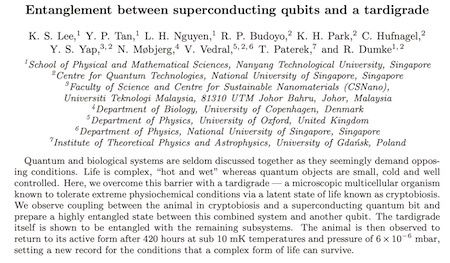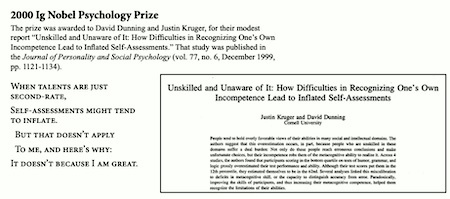Marc Abrahams's Blog, page 63
December 23, 2021
Zi Huang joins Luxuriant Flowing, Former, or Facial Hair Club for Social Scientists (LFFFHCfSS)
Zi Huang has joined the The Luxuriant Flowing Hair Club for Scientists (LFHCfS). She says:
(LFHCfS). She says:
At my last haircut, I had so much hair that the stylist slipped on it and almost fell. After observing this phenomenon I decided to join the LFFFHCfSS immediately to give any future hairstylists adequate warning about the dangerousness of such hair. In addition to having long hair, I work as a lab manager to two professors in business psychology. My interests lie at the intersection of psychology, computer science, and natural language processing.
Zi Huang, LFHCfS
Lab Manager, Ethical Intelligence Lab
Harvard Business School
Boston, Massachusetts, USA
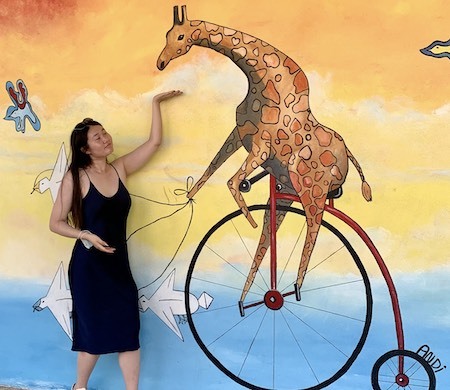
Inconclusive Evaluation of Music Therapy to Reduce Stress in Hospitalized Cats
What can one conclude from playing music for a few stressed cats? A new study suggests the answer:
“Evaluation of Music Therapy to Reduce Stress in Hospitalized Cats,” Juliane Eg Paz, Fernanda Va da Costa, Luciana N Nunes, Eduardo R Monteiro, and Jenifer Jung, Journal of Feline Medicine and Surgery, epub 2021.
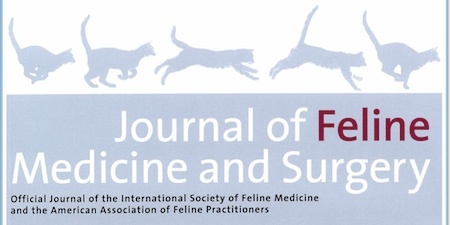
The authors, at Universidade Federal do Rio Grande do Sul, Brazil, report:
This study aimed to evaluate the use of two different types of music – cat-specific music and classical music – compared with no music, to reduce stress in cats during hospitalization.
Thirty-five hospitalized cats were randomly divided into three groups and each group received a different stimulus – cat-specific music, classical music or no music (control) – throughout their hospitalization. Respiratory rate, salivary cortisol and social interaction were documented. A blinded researcher performed the Cat Stress Score (CSS) during the video analysis of recordings at five specific times over 31 h of hospitalization….
Here is what the authors report finding:
[O]wing to the low and unrepresentative number of samples, it was not possible to perform statistical analysis on these results or a group sample comparison.
Here is what the authors conclude from that:
Conclusions and relevance — Both cat-specific music and classical music seem to have some benefit to hospitalized cats.
December 22, 2021
Limericks about Stinky Feet and Community Dad
“Ig Nobel Limericks: Stinky Feet, Community Dad” is a featured article of sorts in the special Ig Nobel Prizes issue (volume 27, number 6) of the magazine Annals of Improbable Research.
Read this article, free, on the web.
Then, if research about improbable reality inspires you, subscribe to the magazine, or buy individual back issues.
December 21, 2021
The Leaf Blower, Capitalism, and Socialism
Leaf blowers, subject of turbulent debate when compared with rakes, can, should they choose to, claim a place in debates about capitalism versus socialism.
This study shows how: “The Leaf Blower, Capitalism, and the Atomization of Everyday Life,” Jules Boykoff, Capitalism Nature Socialism, vol. 22, no. 3, September 2011.
December 20, 2021
The Topography of Robbery: Does Slope Matter? [study]
Are there fewer robberies in urban areas where the streets are quite steep? A question investigated in a 2020 research project by Professor Cory Haberman and entitled : The Topography of Robbery: Does Slope Matter? Journal of Quantitative Criminology volume 37, pages 625–645.
“Steeper street blocks may have fewer robberies because they make the physical costs for committing robberies too high, are too difficult to escape from, and/or provide fewer robbery opportunities due to relatively lower usage.”
In empirical terms :
“A 1% increase in street block slope was associated with roughly 4.5% fewer street block robberies per foot of street block length.”
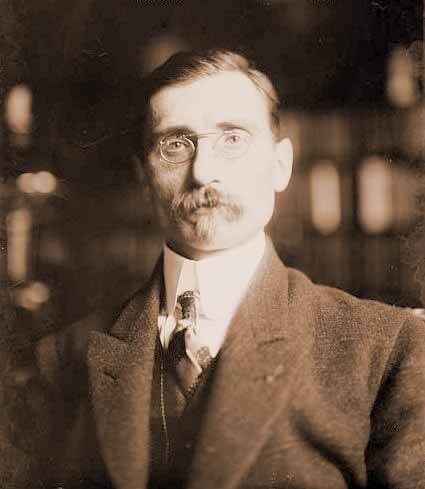 The team cite the work of George Kingsley Zipf who came up with the idea of ‘Human behavior and the principle of least effort’ in 1950. That’s to say, people are often quite keen on avoiding unnecessary effort.
The team cite the work of George Kingsley Zipf who came up with the idea of ‘Human behavior and the principle of least effort’ in 1950. That’s to say, people are often quite keen on avoiding unnecessary effort.
Zipf was, in turn, building upon the work of Guglielmo Ferrero [pictured] who first posited the notion of L’inertie mentale et la loi du moindre effort (Mental inertia and the law of least effort) in 1894 – Revue Philosophique de la France et de l’Étranger 37, 169–182.
Research research by Martin Gardiner
December 19, 2021
Abhishek Upadhyay joins Luxuriant Flowing Hair Club for Scientists (LFHfC)
Abhishek Upadhyay has joined the The Luxuriant Flowing Hair Club for Scientists (LFHCfS). He says:
(LFHCfS). He says:
I am from central India, where I studied Biotechnology Engineering. My first research project was to investigate multicellularity in social amoebae. I went on to receive a full scholarship for a research-based masters in Marine Biology in Hong Kong, performing experiments on larvae and shell proteins of an intertidal oyster. My stint in South Africa concerned evolvability at the origin of cellular life. For my theoretical PhD in Systems Biology, I moved to Germany where I mathematically modeled the molecular switches and rhythms in the circadian clock of a filamentous fungi. I am combining experimental and theoretical approaches to elucidate the regulatory network underlying a developmental clock of the roundworm C. elegans.
Abhishek Upadhyay, LFHCfS
Postdoctoral Researcher
Friedrich Miescher Institute (FMI)
Basel, Switzerland

December 18, 2021
Auke-Florian Hiemstra joins Luxuriant Flowing Hair Club for Scientists (LFHfC)
Auke-Florian Hiemstra has joined the The Luxuriant Flowing Hair Club for Scientists (LFHCfS). He says:
(LFHCfS). He says:
I’m a biologist at Naturalis Biodiversity Center, studying animal architecture. My research is focused on artificial nest material: the inclusion of plastic litter in nests. During the covid pandemic, for example, many birds started to use our facemasks as nesting material. I recently published a paper on the history of artificial plants and of the use of plastic fake plants by birds in their nests. During the weekends I’m organizing weekly canal clean-ups at De Grachtwacht (The Canal Watch), fishing up the strangest items like littered dildos and diaries from the Dutch canals. I love listening to vinyls with only whale sounds.
Auke-Florian Hiemstra, MA, LFHCfS
Ph.D. candidate in Evolutionary Ecology
Naturalis Biodiversity Center
Leiden, The Netherlands

December 16, 2021
Ig Nobel Winners Leap from Magnetized Cockroaches to Entangled Tardigrades
Ig Nobel Prize-winning research comparing magnetized and unmagnetized cockroaches has now led to an experiment involving quantum entanglement and a tardigrade. Details about the tardigrade entanglement are in this study:
“Entanglement Between Superconducting Qubits and a Tardigrade,” K. S. Lee, Y. P. Tan, L. H. Nguyen, R. P. Budoyo, K. H. Park, C. Hufnagel, Y. S. Yap, N. Møbjerg, V. Vedral, T. Paterek, R. Dumke, arxiv.org/abs/2112.07978, 2021. The authors explain:
“Quantum and biological systems are seldom discussed together as they seemingly demand opposing conditions. Life is complex, ‘hot and wet’ whereas quantum objects are small, cold and well controlled. Here, we overcome this barrier with a tardigrade — a microscopic multicellular organism known to tolerate extreme physiochemical conditions via a latent state of life known as cryptobiosis. We observe coupling between the animal in cryptobiosis and a superconducting quantum bit and prepare a highly entangled state between this combined system and another qubit. The tardigrade itself is shown to be entangled with the remaining subsystems. The animal is then observed to return to its active form after 420 hours at sub 10 mK temperatures and pressure of 6×10−6 mbar, setting a new record for the conditions that a complex form of life can survive.”
The Magnetized-Cockroach ExperimentTardigrade co-authors Rainer Dumke and Tomasz Paterek were honored two years ago for research they and other colleagues performed, seeking insight into magnets and cockroaches.
The 2019 Ig Nobel Biology Prize was awarded to Ling-Jun Kong, Herbert Crepaz, Agnieszka Górecka, Aleksandra Urbanek, Rainer Dumke, and Tomasz Paterek, for discovering that dead magnetized cockroaches behave differently than living magnetized cockroaches.
They documented that research, in the study “In-Vivo Biomagnetic Characterisation of the American Cockroach,” Ling-Jun Kong, Herbert Crepaz, Agnieszka Górecka, Aleksandra Urbanek, Rainer Dumke, Tomasz Paterek, Scientific Reports, vol. 8, no. 1, 2018: 5140.
Inside this year’s Ig Nobel Prize Ceremony
“The 31st First Annual Ig Nobel Prize Ceremony,” a detailed look at the ceremony, is a featured article in the special Ig Nobel Prizes issue (volume 27, number 6) of the magazine Annals of Improbable Research.
Read this article, free, on the web.
Then, if research about improbable reality inspires you, subscribe to the magazine, or buy individual back issues.
December 15, 2021
Ig Limericks: Levitating Frogs, Incompetence Unawareness
“Ig Nobel Limericks: Levitating Frogs, Incompetence Unawareness” is a featured revue article in the special Children issue (volume 27, number 5) of the magazine Annals of Improbable Research.
Read this article, free, on the web.
Then, if these limericks, composed by the Improbable Limerick Laureate, Martin Eiger, inspire you, subscribe to the magazine, or buy individual back issues.
Marc Abrahams's Blog
- Marc Abrahams's profile
- 14 followers




